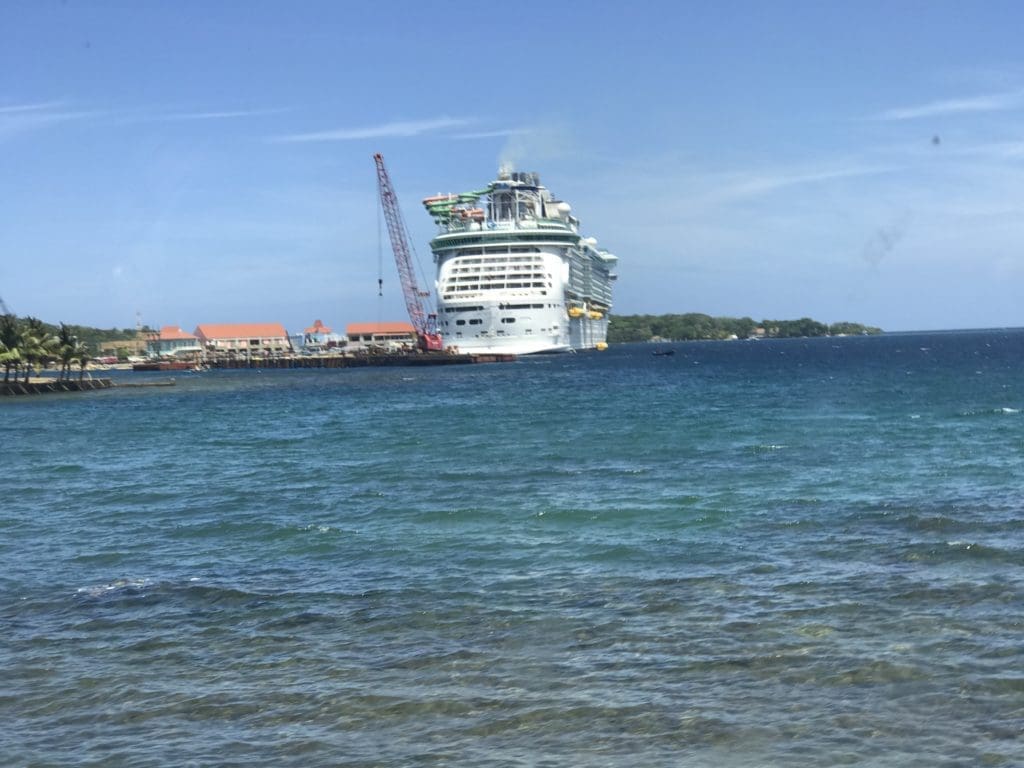
Cruise interrupted! Our glorious seven-night cruise adventure on Royal Caribbean’s Liberty of the Seas ship did not go to plan. We could not possibly know what was going to happen.
Medical Emergency
Our peaceful, carefree Caribbean cruise was interrupted by a family medical emergency in Cozumel. Although the ship arrived in Cozumel at 7 a.m., Steve and I were in no hurry that day and did not exit the ship until close to 10 a.m.
We wandered around the shops for a short time and then headed to the taxi stand to get a cab to take us to Nachi Cocom Beach Resort. This is where we had reservations and planned to spend the day.
Just before we arrived at the taxi stand, I received a text from my daughter-in-law that my 45-year-old son, Brad, was in the hospital. He had what the doctors believed to be a stroke and was having surgery within hours!
He is okay today, his heart is still healing, but YIKES! After tests, it was determined he had a TIA.
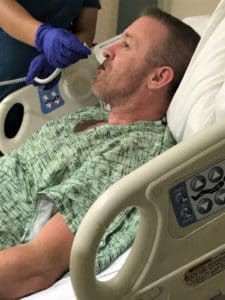
TIA is a temporary blockage of blood flow to the brain. Since it doesn’t cause permanent damage, it’s often ignored. But this is a big mistake. TIAs may signal a full-blown stroke ahead.
https://www.stroke.org/en/about-stroke/types-of-stroke/tia-transient-ischemic-attack
Tests revealed his heart was severely damaged, working at 26% and should have been 65%. He is the last person I would expect to have any health issues. He is now back to his healthy life of riding his bike miles daily, working out, and eating annoyingly healthy food. His heart is steadily improving.
What do we do now?

We, of course, went straight back to the ship. We immediately purchased a Southwest Airlines plane ticket online for me to fly to Houston. I was going to fly home, at a costly same-day one-way ticket expense. Steve would remain on the cruise ship and be back home in two days.
I packed only a small bag Steve would have to pack all the luggage and belongings for both of us but also would have to maneuver his way out of the cruise terminal with all our luggage.
How do you leave a cruise early?

A situation like this had never entered my head. I had no idea there would be a procedure to follow to terminate a cruise early. I guess I thought I’d just walk off the ship; take a cab to the airport and go home. No, that’s not how it works.
You have to follow the cruise line procedures to leave a cruise early. I could have been detained at the airport by Immigration for up to two weeks if I had not followed the correct procedure!
After this experience, I cannot stress enough that you really need to have a passport when you cruise to the Caribbean. A birth certificate or a passport card is not good enough. Neither of those will allow you to board a plane to travel out of the country.

This was foreign to me at the time, and I was a little bit rattled. Thank goodness for Steve’s clear-headedness. The first step is to explain the situation to the Guest Services personnel.
The extraordinarily understanding and helpful Guest Services agent printed my ticket confirmation and other necessary papers the ship required for me to depart the cruise before its end and obtained the necessary authorizations I needed.
We were then walked to the ship’s exit by another agent and waited for the ship’s immigration and customs representative to meet us.
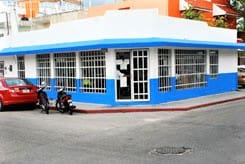
Once he arrived, in a torrential downpour incidentally, the three of us raced to his vehicle, and he drove us to Cozumel’s Immigration office about twenty minutes away. There I signed their required papers, paid the required fee of just over $30, and we headed to the airport.
After reaching the airport, the ship’s agent walked me through to the Customs counter, and then he and Steve waved to me as I went through the security gate. The entire process seemed to me to take forever, but in reality, the ship’s agent completed this process very quickly and efficiently.
He was kind enough to drive Steve back to the ship. The ship had mistakenly checked Steve off of the ship as a medical exit and he had a difficult time being allowed back on! Just a little mix-up that he was able to straighten out at Guest Services.
Waiting at the airport

Once I was checked in at the airport, I had to wait several hours until my flight time. Those were long hours. Brad was supposed to be in surgery during this time, and that is all I knew.
Although Brad had gone into the surgery after signing consent papers for open-heart surgery, if necessary, it, fortunately, turned out that only a catheterization was required, but no one knew that at the time.
Arriving home
My flight arrived at Houston Hobby airport late that evening. Several friends and family members had offered to pick me up at the airport, but I knew it would be really late, and I wanted to go to the hospital and then go home much later. It was easier for me to take Uber for both trips.
He’s going to be fine
I finally arrived at the hospital, and although it was after visiting hours, I was able to visit. Brad did not look great, but I could see he was going to be okay. That is when I learned he had a TIA, not a major stroke.
That was a relief. I cannot remember how long I stayed at the hospital before leaving, but my day ended at home after midnight.
When Brad left the hospital, a week later, along with many restrictions on his lifestyle, his cardiologist required him to wear a defibrillator LifeVest 24 hours a day, every day, for three months. This device would restart his heart and alert medical personnel if it detected a problem.
He couldn’t leave the hospital until it arrived from the vendor and he was instructed on its use. Brad travels frequently for his job and as you can imagine from the photo below, he was very apprehensive about going through airport security after he returned to work.
It turned out, however, airport security was familiar with this LifeVest and it was not a problem.
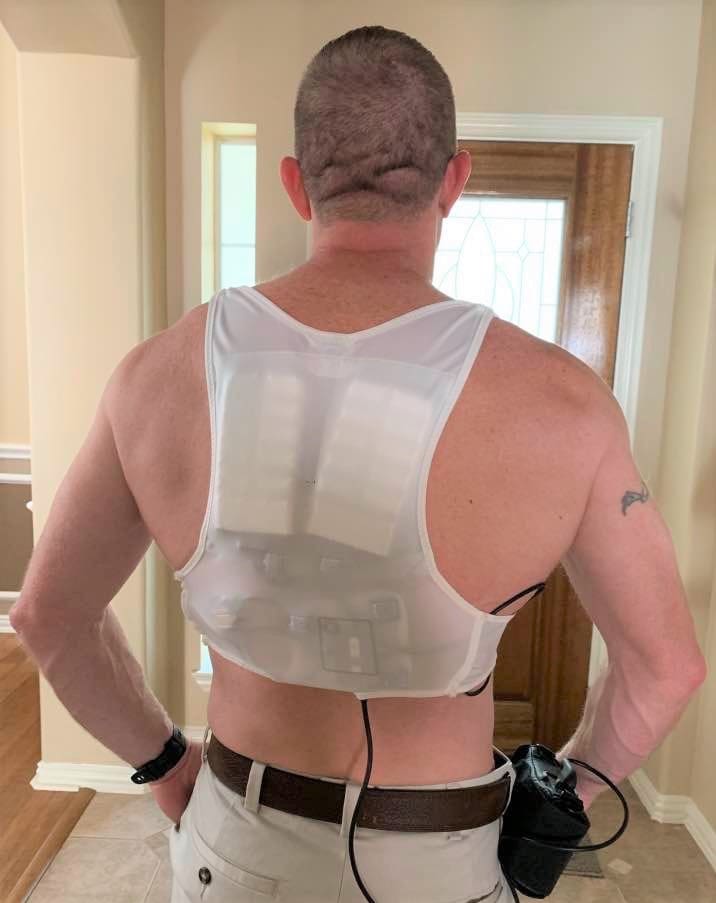
LifeVest is a wearable defibrillator. Unlike an implantable cardioverter defibrillator (ICD), LifeVest is worn outside the body rather than implanted in the chest. LifeVest is designed to continuously monitor a patient’s heart, detect life-threatening rapid heart rhythms, and automatically deliver a treatment shock to restore normal heart rhythm.
https://lifevest.zoll.com/medical-professionals
Brad remained in the hospital for about seven days. His doctor did not know at the time of his hospital discharge if his heart would repair itself or not. Some months have passed now, and his heart is slowly mending itself and he will not require a pacemaker, which had been an option.
He is back in full swing and working from home as is the way of the world these days. He is able to ride his bike and exercise as usual.
Quite a scare for all, especially Brad’s wife, Tina, and their two teenage sons.
I did not have to fly home, but that is what I chose to do, what you would do also if it was your child, right?
We have taken a few cruises since this time and since we cruise from Galveston, almost all itineraries go to Cozumel so this one port stop has been made up over and over again since that crazy day. See Cruising is different now but still the same.
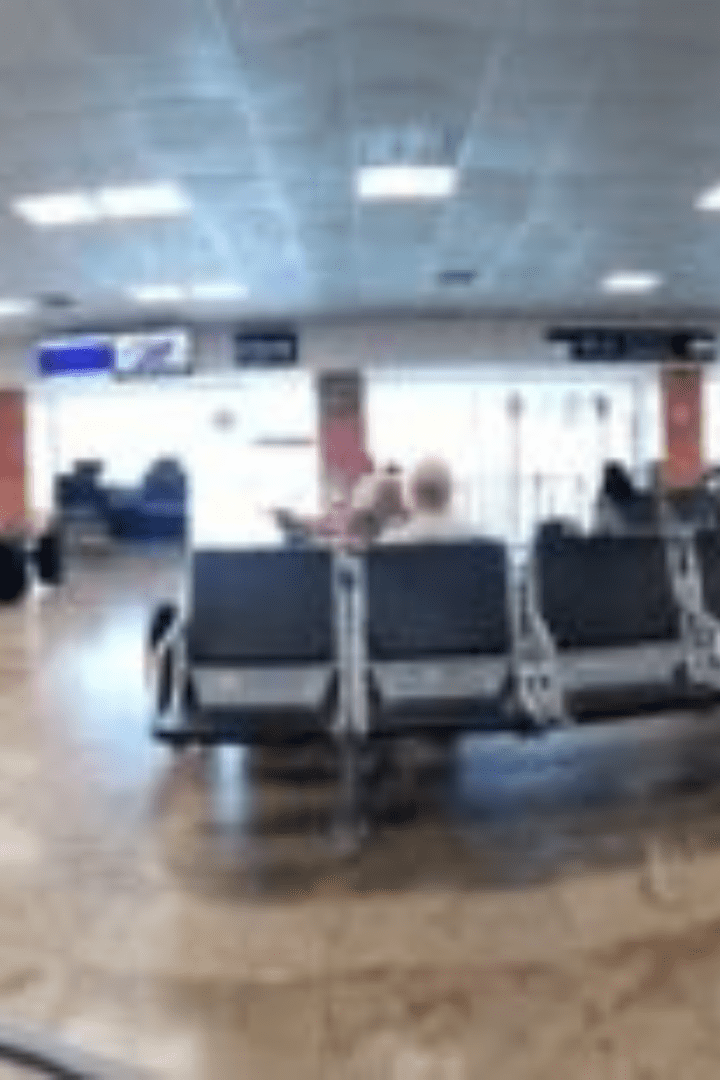
OMG!!! How scary! I’m so glad your son is on the mend. And thanks for the info on what to do if you need to leave a cruise in an emergency. I hope I never need it, but its good to know!
It was quite scary and so very unexpected. I love surprises, but NOT this kind of surprise. I’m glad the information was helpful.
Still wish you had called me to pick you up at the airport.
Thank you, Judy. I know you would have!